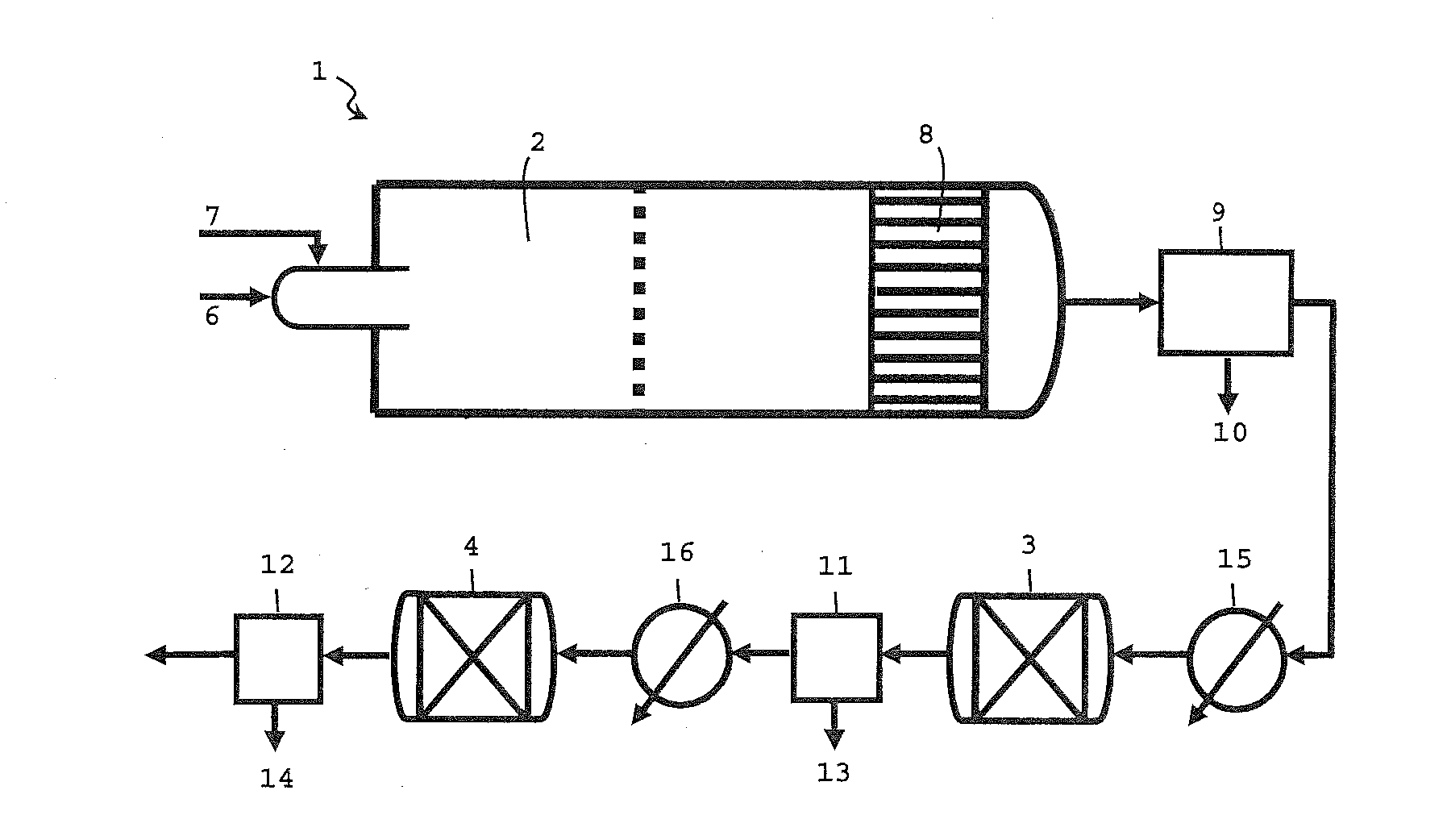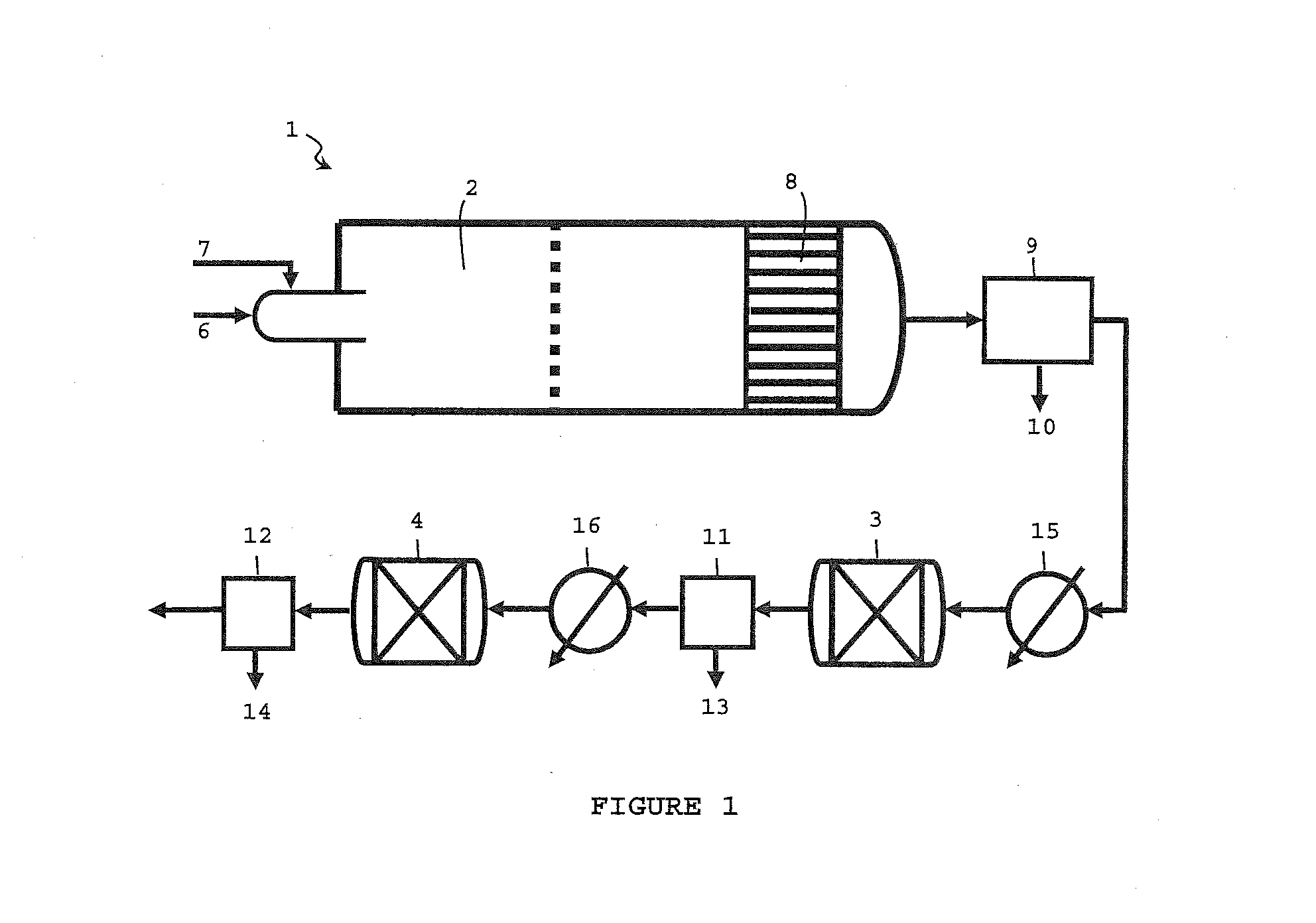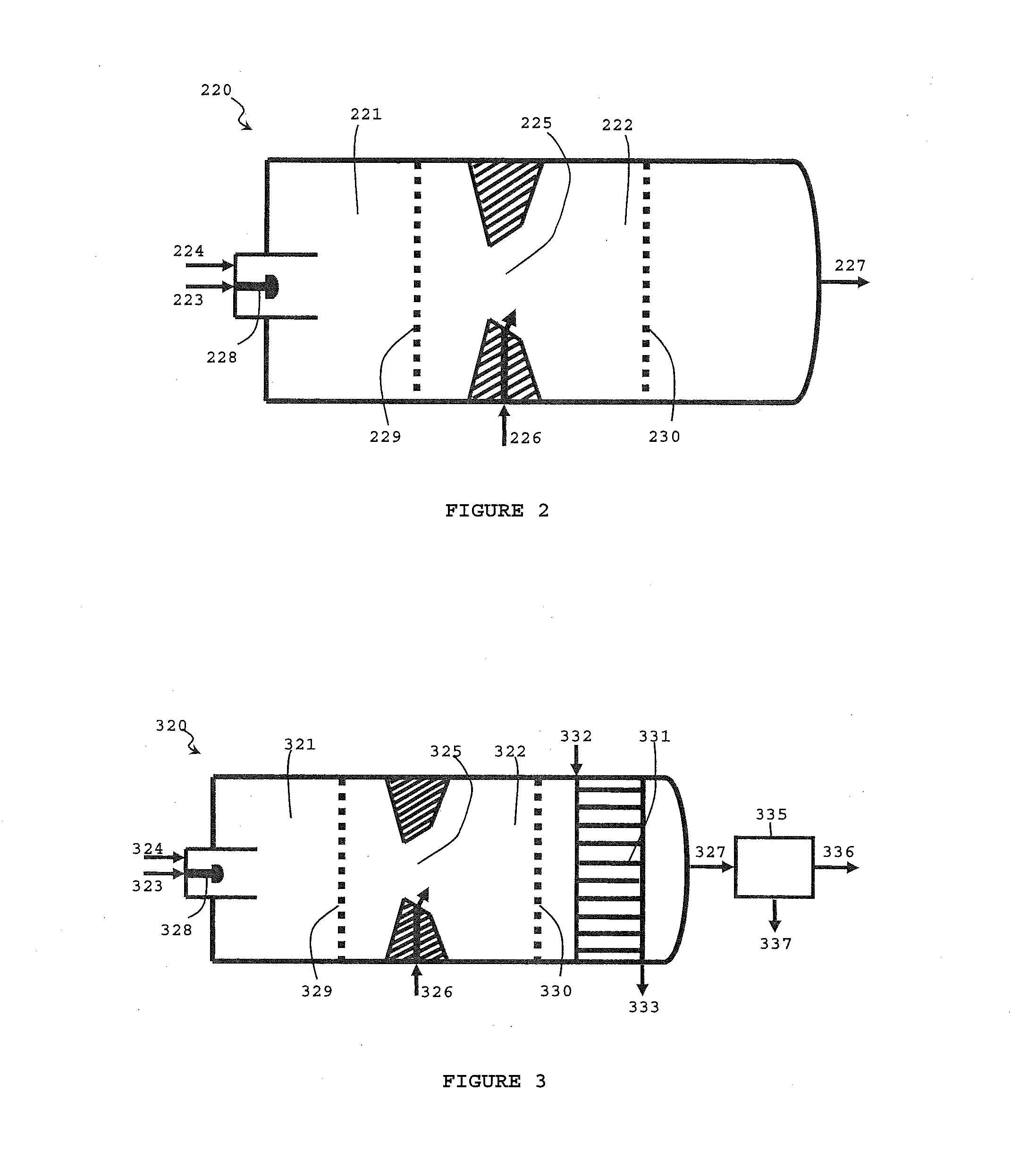Staged combustion of sulfureous combustible effluents with recovery of the sulfur in the claus process
a sulfur combustible effluent and claus process technology, applied in the field of oil exploration and production, can solve the problems of high cost, recurrent management of acidic gases, and use of materials that are sufficiently resistan
- Summary
- Abstract
- Description
- Claims
- Application Information
AI Technical Summary
Benefits of technology
Problems solved by technology
Method used
Image
Examples
examples
[0087]Tests for the recovery of elemental sulfur were performed by treating, in two successive steps, a sulfureous combustible effluent stream as a mixture with an oxidant gas, with a stream of acidic gas for desulfurizing a sulfureous natural gas.
[0088]The process was performed in an installation similar to that described in FIG. 6, i.e. using an oven designed according to the invention with a chamber for combusting the said stream and a post-combustion chamber with acidic gas, followed by 2 Claus catalytic steps for treatment of the oven effluents. Each step was equipped with a heat exchanger, a reactor with standard activated aluminas and a condenser.
[0089]The sulfureous combustible effluent stream to be treated was a DSO containing, on a weight basis, 6.1% of DMDS, 46.7% of DEDS, 24.1% of DPDS, 14.3% of DBDS, 2.2% of DPDS and 1.3% of DHDS. The oxidant gas used was air. The said liquid stream and the combustion air were conveyed into the burner of the combustion chamber at respec...
PUM
| Property | Measurement | Unit |
|---|---|---|
| residence time | aaaaa | aaaaa |
| temperature | aaaaa | aaaaa |
| temperature | aaaaa | aaaaa |
Abstract
Description
Claims
Application Information
 Login to View More
Login to View More - R&D
- Intellectual Property
- Life Sciences
- Materials
- Tech Scout
- Unparalleled Data Quality
- Higher Quality Content
- 60% Fewer Hallucinations
Browse by: Latest US Patents, China's latest patents, Technical Efficacy Thesaurus, Application Domain, Technology Topic, Popular Technical Reports.
© 2025 PatSnap. All rights reserved.Legal|Privacy policy|Modern Slavery Act Transparency Statement|Sitemap|About US| Contact US: help@patsnap.com



